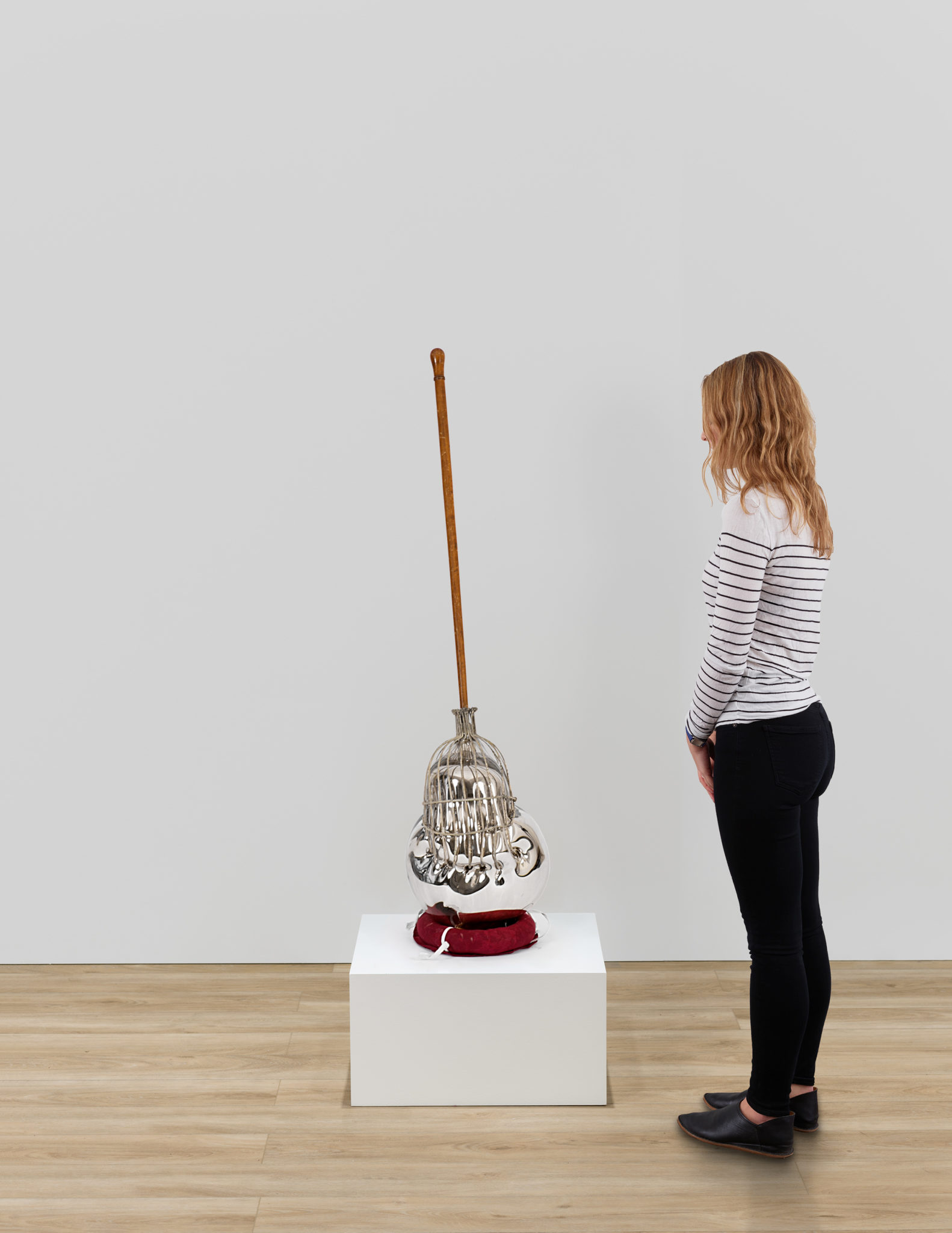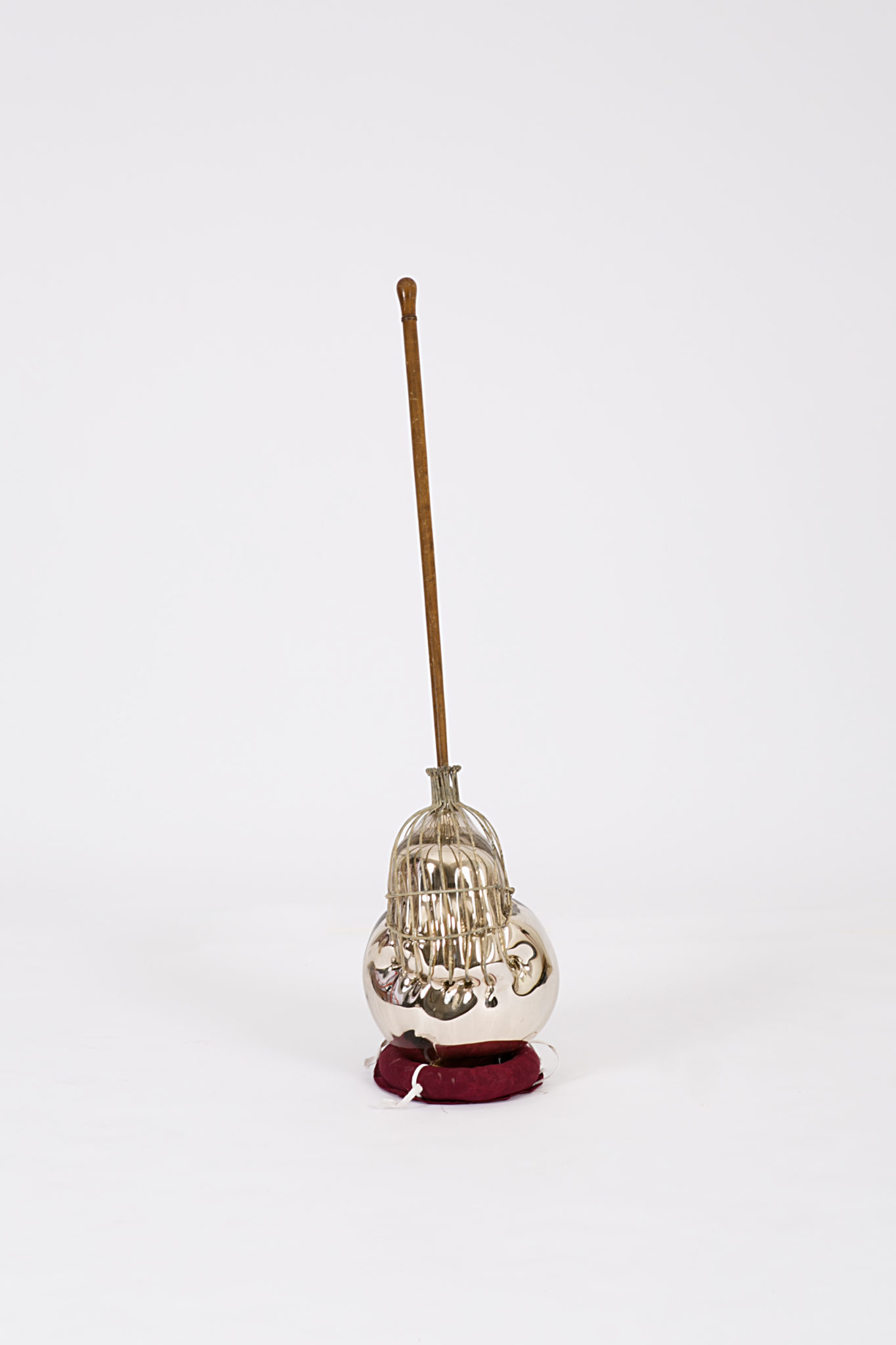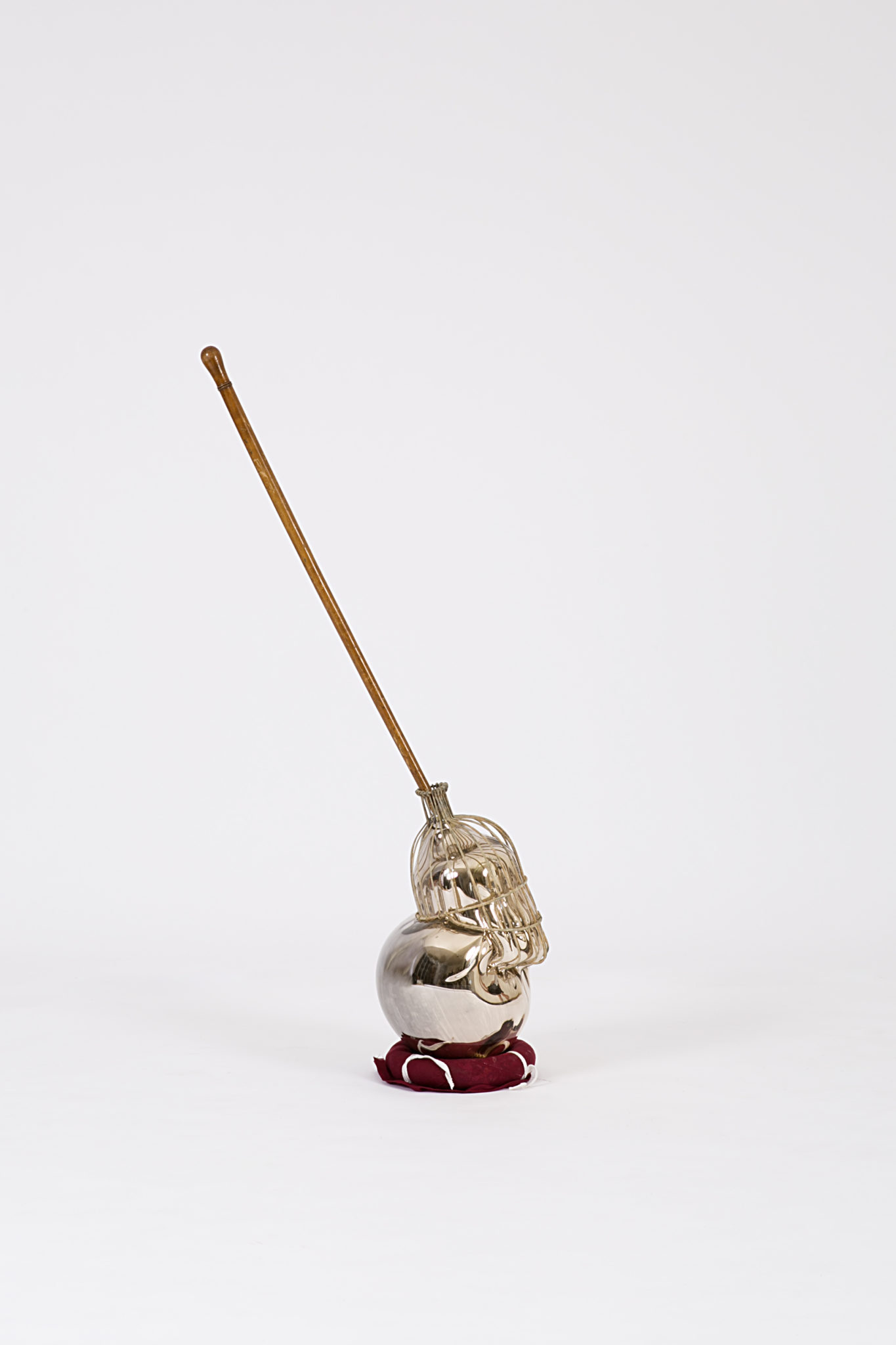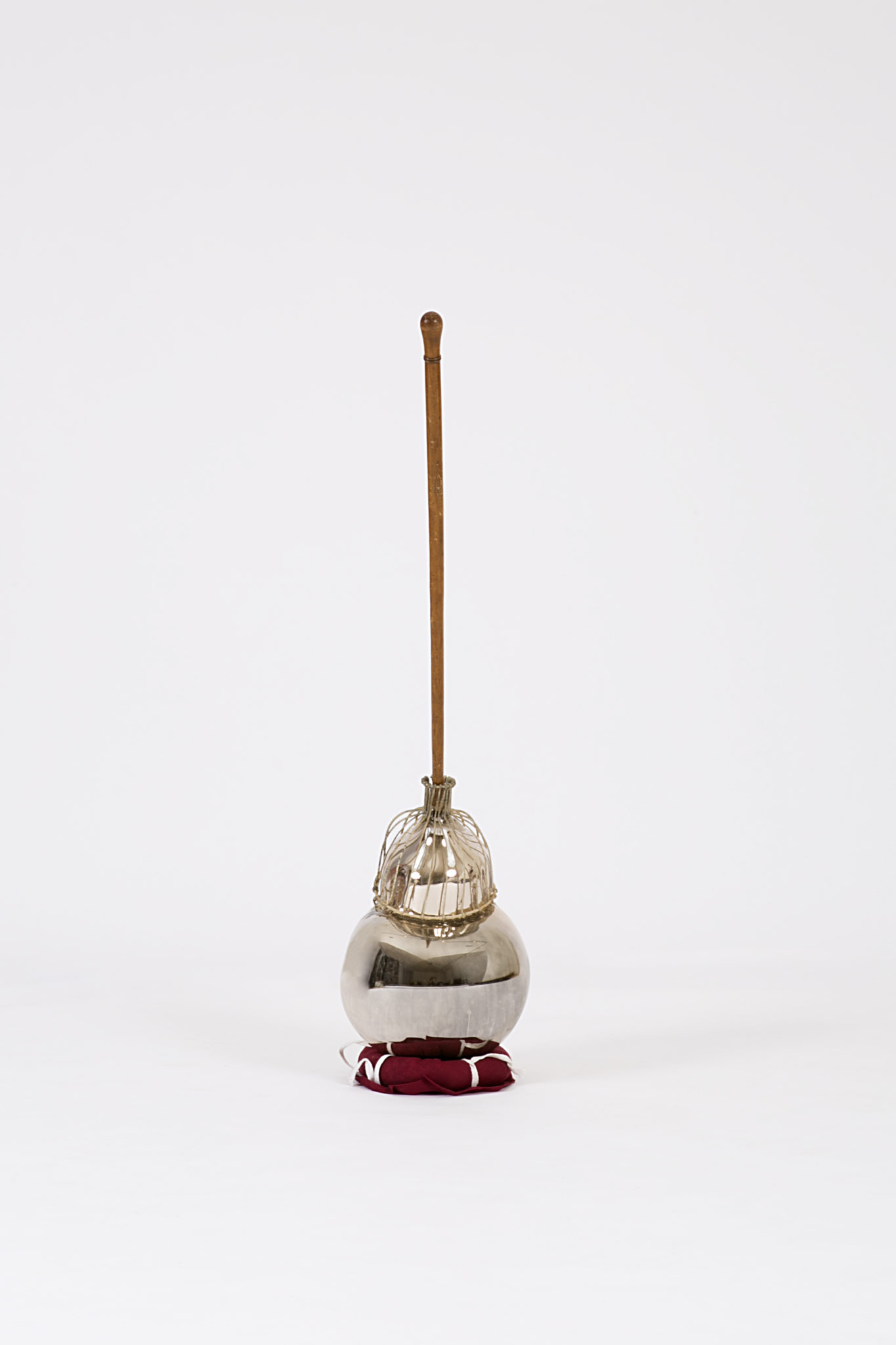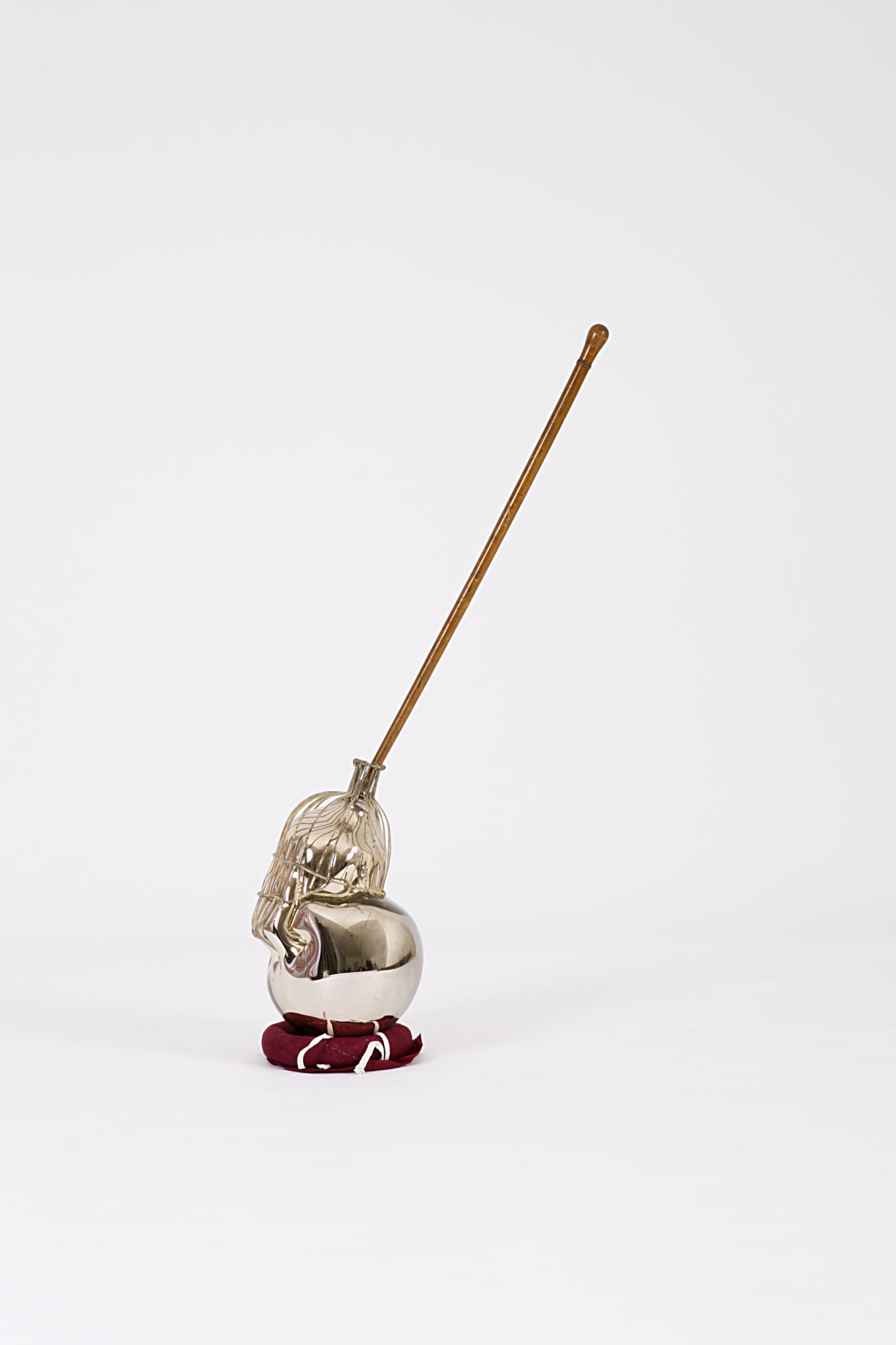Terry Adkins
Marshall, 2013
Wood-handled fruit harvester, chrome, blown glass, and velvet cushion
45 x 12 x 12 inches (114.3 x 30.5 x 30.5 cm)
© Estate of Terry Adkins / Artists Rights Society (ARS), New York
The approach towards mining chosen objects for visceral properties is influenced by my experience as a practicing musician, it is the physical equivalent to tapping the expressive power of a musical instrument for sound, forging an intuitive bridge between the musical and visual disciplines.
—Terry Adkins
The practice of multidisciplinary artist Terry Adkins, embodies the spirit of improvisatory freedom found in jazz, resonating with a powerful presence and thematic associations inspired by his deep engagement with history. Marshall (2013) is one of several works in the same media named after various cities across the United States, the earliest of which date to 2002. The series presents a vessel of blown glass cinched into the wiry grasp of a fruit harvesting instrument. Here resting on a velvet cushion, the sculpture evokes the weighty history of American agriculture while remaining grounded in the conceptual lineage of 20th-century Western art. Adkins referred to his Duchampian repurposing of found materials as “potential disclosure,” a process in which objects are re-contextualized to reveal previously dormant historical or metaphorical connotations. The act of fruit picking is a politically loaded form of labor, for it implies both the exploitation of farm workers under slavery and the oppressive conditions endured by migrant workers.
Adkins created Marshall while engaged in extensive research on both renowned agricultural chemist George Washington Carver and the artist Yves Klein. Connected by the invention of new shades of blue (Klein’s International Klein Blue and Carver’s Egyptian Blue 9th Oxidation), the works presented in the 2013 exhibition Nenuphar (the last exhibition organized during the artist’s lifetime) draw uncanny parallels between the two Renaissance men while highlighting unknown or obscured aspects of both figures’ biographies. Born into slavery, Carver’s most lasting social impact was his promotion of alternative crops and his development of methods preventing soil depletion, vastly improving the quality of life of poor farmers and allowing American agriculture to move away from the cotton monopoly. Combined with Klein’s visionary project founded on mystical tenets, Adkins’s sculptures abstract the common ground shared by Carver and Klein to create new objects that reconcile their disparate histories, effectively rendering the immaterial ideologies of both in physical form. Brancusian in design, the amoebic, mirrored glass bulb of Marshall transforms the fruit picker into a tool that captures the breath of its creator, a Kleinian void made manifest and held fast in the grip of a tool replete with Carver’s social history.
The title of the present work also reveals deeper implications connected to Adkins’s interests in local histories; the town of Marshall, Texas (located east of Dallas, near the Louisiana border), was the destination for tens of thousands of newly freed slaves throughout the final years of the Civil War. The town’s population of black Americans continued to grow as it became a hub for the burgeoning railroad industry. In 1873 the historically black Wiley College was founded, where several key figures of the civil rights movement were educated. Carver was honored in 1959 with the establishment of George Washington Carver Elementary School in Marshall.
On view from February 20, 2020 through January 10, 2021, Terry Adkins: Our Sons and Daughters Ever on the Altar is co-organized in Nashville by the Frist Art Museum and the Carl Van Vechten Art Gallery at Fisk University, the artist’s alma mater. Terry Adkins: Resounding is at the Pulitzer Arts Foundation in Saint Louis from March 13 through Spring 2021.

